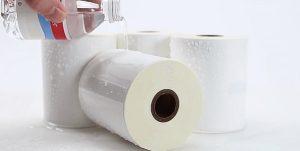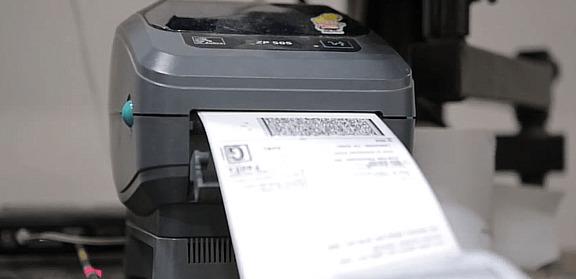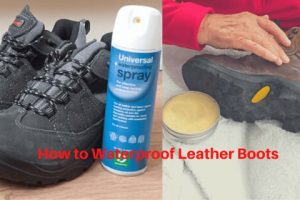Waterproof labels are an essential part of any product packaging, especially for items that may come into contact with water or high humidity.
They are made with a strong, permanent adhesive that helps the label withstand the toughest conditions. Waterproof labels provide more durability than regular paper labels, ensuring that your logo, image, or text will remain intact for a long period of time.
In this article, we will explore what you need to know about waterproof labels, from the benefits to the different ways you can achieve waterproofing.
What is the waterproof label?
Waterproof labels are made with a strong, permanent adhesive that protects against water damage. the waterproof label remains intact even when exposed to water. Basically, these labels withstand a wide array of temperatures.
Waterproof labels are essentially more durable than regular paper labels. They are made with a water-resistant formula that helps the labels survive against water.
Generally, product labels such as frozen food labels, packets of pharmaceuticals and cold drinks labels, and others contain water-resistant properties.
As a result, these labels retain the company’s logo, image, or text for a long time because waterproof labels come with features resistant to scuffing, tearing, and smudging.
Hence, waterproof labels are very important to protect the label from the harmful effects of water.
Benefits of waterproof Label
Generally, waterproof labels are durable and highly functional. Guaranteed these labels will not come off the container even when exposed to water, even the bottle will look new for a long time.
Waterproof labels are very suitable for high-temperature applications. As a result, this label can be used in high-humidity environments. Waterproof labels are very useful for bottles or containers that are used in the bathroom or kitchen.
Usually, labels contain product information including a brand’s logo, design, text or image, so waterproof stickers are very effective in making them visible.
What’s the difference between waterproof vs. water-resistant labels?
How do waterproof labels work?
At present waterproof labels are more functional and in demand than regular paper labels. Waterproof labels have adhesive solid properties for durability and longevity.
When printing waterproof labels with an inkjet printer, the labels are given a waterproof topcoat. This topcoat essentially protects the ink from water. This topcoat seals and protects your printed label from water damage once the ink dries.
On the other hand, laser printers are the best when it comes to waterproofing labels. Printing waterproof labels with this printer do not require any coating. And laser printer-made labels are more durable and long-lasting.
There are very easy ways to waterproof labels at home apart from professionals. If you are thinking of DIY the labels then you can definitely do it. Waterproof the labels at home with a custom-made label maker at a low cost.
You can waterproof the label in a number of ways.
For example:
1. Use of plastic-based materials:
You can use one of the plastic-based materials to waterproof the label. All of these materials make the labels waterproof and suitable for use in humid environments. Plastic-based materials for waterproofing labels are:
- Polyester
- Polythene
- Polypropylene
- PVC
2. Waterproof the label by using a spray:
A simple and reliable solution for waterproofing labels is to apply a coat of waterproofing spray. In this case, dry your label ink thoroughly, and place it on a clean flat surface.
At this point, Shake the spray bottle and place it 8-10 inches away from the label and spray it. Make sure to coat each part of the label evenly and let it dry last.
3. Waterproof the label using an overcoat sticker sheet:
Overcoat sticker sheets are a great way to waterproof labels, so you can use this process.
This process requires you to choose a label size sticker. Make sure the ink on your printed label is dry. This time lay it parallel to the surface.
Apply the overcoat sheet evenly to the surface of the label. This time apply pressure to the surface and make sure there are no bubbles. Now let the overcoat set well.

Choose the correct printing process:
You can make the label waterproof by proper printing process. In that case, you need to know some correct information about the printing machine.
For example:
Inkjet printers: Labels made with inkjet printers will be relatively less weather-resistant. Inkjet printers use water-based inks, which easily degrade when exposed to water. Therefore, we suggest you avoid using inkjet printers.
However, if you want to use an inkjet printer, use high-quality water-resistant ink or pigment-based ink.
Laser printer: You can use a laser printer to get water-resistant labels. Laser printers offer more protection against water than inkjet printers.
So you can use a laser printer to print waterproof labels. But in that case, consider powder-based toner.
Conclusion
In conclusion, waterproof labels are a great solution for products that are exposed to water or high-humidity environments. The labels are made with a water-resistant formula that helps them survive against water.
They are also durable and highly functional and come with features resistant to scuffing, tearing, and smudging. Furthermore, you can print waterproof labels with a laser printer or with a custom-made label maker at a low cost.
When printing waterproof labels, make sure to use high-quality water-resistant ink or a powder-based toner for laser printers. With this knowledge, you can now create waterproof labels for your own products with ease.


![Read more about the article 5 Best Tent Waterproofing Sprays In 2024 [Updated]](https://theconsumertips.com/wp-content/uploads/2020/04/How-To-Waterproof-a-Tent-300x182.jpg)
